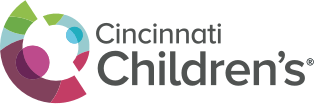How Our Biobank Samples Help Fuel Medical Research
Here at Cincinnati Children’s, research is an important aspect of patient care. Every time our researchers discover something new about an illness, or find a better way to diagnose or treat it, they share their findings with our physicians. This means our doctors and other providers have access to the latest scientific evidence, and are often among the first in the country to offer new tests and treatments.
But none of these advancements are possible without research participants. By enrolling in the Discover Together (DT) Biobank—and giving biological samples such as blood or saliva—you can help our researchers discover the next breakthrough treatment or cure.
Your Samples in Action
Here are just a few of the ways we’ve used biobank samples in our research.
Studies Conducted at Cincinnati Children’s
Our biobank volunteers played a crucial role in several recent studies conducted at Cincinnati Children’s. Some examples of recent collaborations include research related to:
- Anaphylaxis (life-threatening allergic reactions). One of our physician-scientists is analyzing blood plasma and blood serum samples from children who needed emergency care for anaphylaxis. He and his team are working to identify biomarkers (signs) of anaphylaxis at the molecular level, so it can be identified and treated quickly in an emergency room setting.
- Circadian rhythm (the body’s internal clock). We’ve been studying how an individual’s circadian rhythm affects different aspects of their health and life. This includes their sleep schedule and their body’s ability to break down medications at certain times of day. So far, our efforts have led to novel treatments for circadian sleep disorders in pediatric populations. They’re also paving the way for clinicians to tailor commonly used drugs so they’re more effective. Read more about this in a New York Times article.
- Sharing genetic test results with younger patients. We’re studying whether teens and young adults who have genetic testing are interested in knowing the results. Specifically, we aim to understand whether younger patients want to be part of the decision-making process when given the choice to receive genetic test results. And we want to compare how teens and young adults choose to learn about their risk of developing a future genetic condition (or passing it on to their children). Read the article on PubMed.
- The genetic factors that shape newborn and maternal health. Some of our researchers are part of an international network called the Multi-Omics for Mothers and Infants (MOMI) Consortium. Funded by the Bill & Melinda Gates Foundation, the MOMI Consortium aims to improve maternal, fetal, newborn and child health in low- and middle-income countries. Its members are working to identify genetic markers that may predict adverse outcomes such as preeclampsia and preterm birth. Here at Cincinnati Children’s, we’re contributing to this effort by collecting (and analyzing) more than 25,000 maternal and fetal DNA samples.



